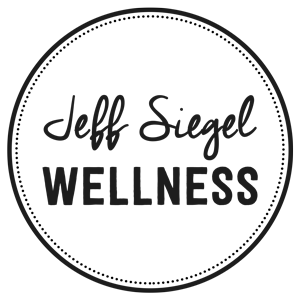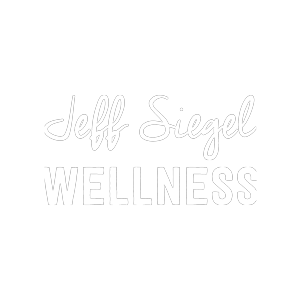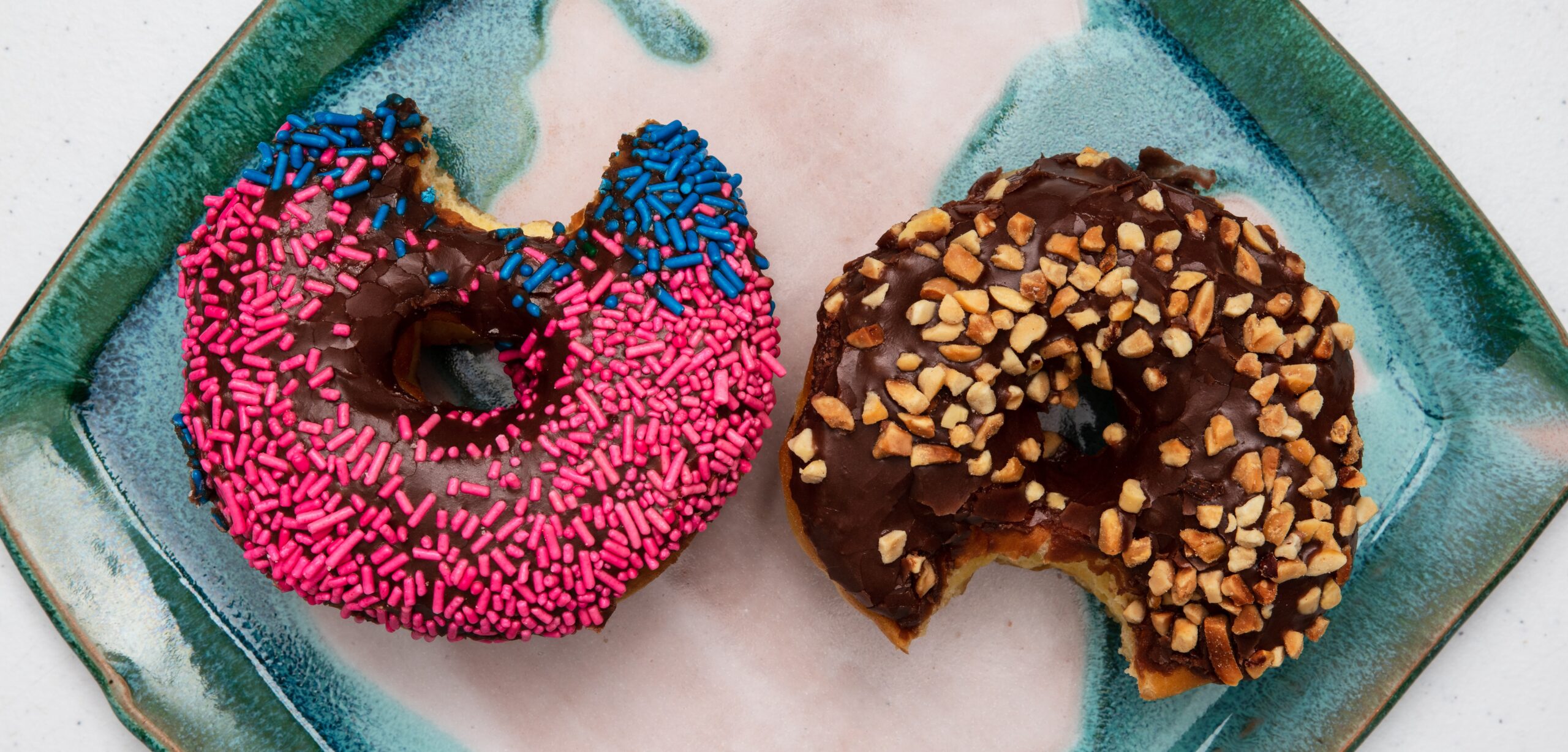I’ve been told so many times that broccoli is a “good” food and cheesecake is a “bad” food that I stopped paying attention to whether I actually enjoy broccoli and hate cheesecake. My food philosophy didn’t just bend my reality, it obscured it.
I habitually say no to cheesecake (and pretty much every dessert) because I know too much about its detrimental effects on the body. I’ve seen firsthand how it can spike blood sugar (I have the data from a month wearing a glucose monitor.)
“If you only understood the metabolic impact of saturated fat mixed with tablespoons of added sugar and artificial coloring, you too would keep the cheesecake at bay,” or at least this is what I like to tell myself. Meanwhile, the snooty part of my food brain continues to eat broccoli because, you know, it’s good for you.

In fact, I’ve internalized a little voice in my head that parses every food item into nice little good and bad categories.
- Cruciferous vegetables: good. Chocolate fudge: bad.
- Spinach with grilled chicken: good. Sub sandwich with fried chicken: bad.
- Farmed Salmon over rice pilaf: good enough…
Argh the scale of judgment doesn’t like to accommodate nuance. And it is precisely in the gray space between “good” and “bad” where pretty much all food exits.
It’s taken me years to unlearn some pretty strict internalized rules about what I can eat. Despite my best efforts to free myself from black and white thinking about food, the data on the dietary disasters of highly processed snacks, refined oils, and added sugars seems pretty clear.
Not all foods are created equal. Highly processed foods and whole foods seem to have significantly different impacts on the human body.
So where does this leave us?
As someone who is a proponent of a holistic and mindful approach to eating, one that goes beyond the highly regimented “food fascist” mindset, how can I reconcile the science of nutrition with the satisfaction of eating an entire bag of scrumptious snacks?
Food Rules Are Evolutionary
Consider our ancestors wandering the plains and forests looking for sustenance. How would one cavewoman know whether a berry was edible or poisonous? (I’m taking a moment of gratitude for all the fallen humans who paved the road through trial and error to help build the collective knowledge of what foods are safe to eat.)
Nature provides an abundance, but some of that abundance can kill. Safe foods were foods that didn’t result in an agonizing poisonous death. There was tremendous value in communicating to people in your tribe that this food was safe to eat and this other one was not. “Good” foods and “bad” foods were born out of survival, and that legacy of tribalism and black and white judgement about food remains today.
In fact, many tribes distinguished themselves by which foods they consumed. Just look at Kosher practices described in the Old Testament. Yes, these were somewhat based on the hygienic realities of the time, and they were also symbolic of cultural identity. If you wanted to belong to the tribe (and belonging meant safety and protection) you ate certain things and didn’t eat others. Your food choices were constrained by the social norms and ultimately tied with your identity and survival.

Fast forward to today and the food landscape hasn’t changed all the much. We still live in a land of tribal eaters. Just ask your vegan friend if she would have dinner with your paleo buddy. Oh, don’t forget your gluten-free friend is requesting you keep the kitchen grain-free.
Yes, I’m poking fun at these dietary tribes, not because I think they’re crazy, but to prove how we still use food as an important identity locator in society. Food and our beliefs about it slice and dice us into in-groups and out-groups as much as religion does in modern America.
The New Religion of Eating – Nutritionism
What sets us apart from our tribal food forebears is science, specifically the study of nutrition and physiology. We know how things like macronutrients, vitamins, and hydration affect your body and performance. We can study the biochemistry of digestion and metabolism and learn about things like how eating trans-fat produces inflammation that impacts the functioning of cells.
Despite all this beautiful knowledge about the body, nutrition is a fairly young field as far as science goes. And unfortunately, nutritional science can often seem like a total shitshow with just about every possible conclusion supported in the literature.
Prevision Nutrition (not affiliated, but I trust and deeply appreciate their work) summarized this the best in their Infographic “Why Nutrition Science is So Confusing”. Here are their main points:
Why Nutrition Science is So Confusing
- Nutrition research is still young. In fact, we didn’t even know about most vitamins until the early 1900s.
- Most funding goes to disease treatment, not preventive nutrition. The majority of science is about what will keep you from dying, not what will help you looks sexy as hell in bed.
- Funding for nutrition studies are often tied to companies with vested interests in the outcomes. E.g. Pepsi doing a study on whether sugary drinks lead to weight gain.
- Confounding variables make it hard to prove food’s effects. Was it the food that you ate or the food that you didn’t eat? What about how you ate it (slow vs fast), when you ate it, where you ate it, with whom, and why? All these variables impact your body.
- Most nutrition studies are observational. Rememberm, correlation doesn’t mean causation. Plus people are terrible at accurately recalling how much they actually ate.
- Measurement tools always have limitations. Most studies look at limited biomarkers that can be easily measured like body fat or cholesterol and in doing so will inevitably overlook many other important indicators of health. Yay if your cholesterol went down, but if you felt like total garbage for the duration of the study, was it really a healthy intervention?
- What you eat doesn’t affect your health right away. Longitudinal studies that follow people for years are very expensive and difficult to run.
- You can never assume a study’s findings apply to you. A lot of studies are done on rats. You’re not a rat. (Or are you?)
- If doing the research is difficult, reporting it is even tougher. Yes, reporters need a little grace in their attempts to make sense of the science, but the incentives for sensationalizing and overgeneralizing studies makes it hard to get accurate interpretations of the data.
Putting all this together and you can see why nutrition recommendations need to be taken lightly.
However, it doesn’t mean we should toss the baby out with the bathwater. Can we understand the weight that the particular evidence holds and where it is placed in the hierarchy of nutritional importance, without jumping to conclusions about what is good or bad for our body at a specific point in time?
This is where the good food bad food debate comes to a tilt. We are left with the fundamental conundrum of finding a “both, and” approach to eating well.

How can we acknowledge that there are nutritional realities based upon measurable evidence that certain foods have predictably favorable or unfavorable effects on human bodies, and accept that science-based recommendations on what to eat is limited, incomplete, based on averages, and needs to be considered within your individual biological, psychological, and social context?
Jeff Siegel
If you truly care about adopting the most comprehensive, powerful, and robust approach to health, you cannot accept one or the other. You need both: a scientific understanding of food and highly individualized lifestyle approaches to creating health and wholeness.
The Challenge of Being Inclusive
The challenge is that an inclusive approach that transcends and includes the biological truth about food and the lived reality that we don’t eat isolated nutrients in a disconnected bubble is really damn hard to do.
As humans, we want simplicity and certainty. In the face of overwhelming complexity, we use cognitive shortcuts to create meaning and order. This is why food rules that parse everything into good or bad are so attractive. A clear set of rules is comforting and can be a big relief when you’re standing in the aisle trying to determine which of the seventy-five types of milk and milk substitutes you should buy.

I don’t think we can disband with food beliefs entirely. (Enter: Robots). But we can work with our beliefs, and see how our food rules are constructed by a myriad of factors that may or may not reflect scientific truths.
- Can we be bold enough to let go of long-held food beliefs implanted into your psyche by media, parents, and personal preference?
- Can we dare to update the good foods list with scientific evidence and amend the bad food list based upon our own real-world experience of what makes us feel our best?
- Can we see how we cling to food rules out of a need for control in a world that is largely beyond our impact?
- Can we aknowledge that our enviornent and social relationships play into eating patterns just as much as any ingrained beleifs about good and bad foods?
- Can we strive to make good enough decisions that go one step beyond wishful thinking or past preference and integrate the good, the true, and the beuatiful aspects of eating?
Addressing these questions takes time. It takes education, and it takes a willingness to try different ways of eating and documenting their effects as objectively as possible.
Living In The Good Food, Bad Food Tension
Part of my brain desperately wants to resolve this good food, bad food debate once and for all. We’re all too busy to spend hours debating the finer points of each thing we eat. Such inquiries can drive us crazy. At a certain point, we will fall back on some beliefs about what is good to eat and what is not, especially if those beliefs makes us feel safe and connected.
Despite this pressure to use good food, bad food rules, I believe the most important thing we can do for our health is to embrace the nuance and complexity of our body as an evolving transformation of physical and mental energy and proceed with kindness and care.

Accept that all food exists on a spectrum of good and bad with regard to specific impacts on your physiology. Learning about how your favorite foods impact your biology is essential. Ignoring what science has to say or tossing out any facts that disagree with your nutritional philosophy is shortsighted.
At the same time, accept that science can guide but not decide. You need to take responsibility for the cumulative effects of your food choices on your body and mind. Assessing how your food alone impacts your overall well-being is something much more complicated to assess. You need to zoom out and take a bigger lens that reflects your lifestyle, goals, and needs, something that a health coach helps you figure out.
When we give ourselves a little grace to live in the middle, not demonizing any food or nutrients, but also not abandoning what the body of scientific evidence has to say about healthy eating patterns, we can find peace with the “food fascists” and eat to unlock and support our biological potential.
Good Food, Bad Food, Enjoyable Food – Vitamin P: Pleasure!
One final point that needs to be acknowledged in this good food, bad food discussion is enjoyment.
The actual experience of eating, its social context, environmental implications, and rich sensory pleasure often get pushed aside when assessing a food’s healthfulness. Food is a tremendous source of daily satisfaction, and I believe it should be enjoyed thoroughly.
Eating slowly, mindfully, chewing, and savoring each bite can turn the need to feed into the exquisite delight of dining with others – a uniquely modern human experience that allows your meal to provide nutrition to your body and sustenance to your soul.

Don’t skimp on Vitamin P: Pleasure. Food can be pleasureful and nutritious. We might assume “bad” foods are more pleasurable than “good” ones — yes, cheesecake is a hell of a lot richer than broccoli — but when we weigh the biological impact of eating together with the appropriate attention to pleasure, we can start to do a different kind of eating math. The goal isn’t to simply chase pleasure or to restrict it. The goal is to see Vitamin P as another nutrient that needs to be considered alongside all your other vitamins to ensure you’re truly nourishing your body and soul.
This holistic calculus does not bifurcate the food world into good or bad, but paints a rainbow of eating experiences with different pleasures and different consequences. All have a place as long as you’re willing to take responsibility for the picture you’re painting.
To eating the rainbow (metaphorically & figuratively)
~ Jeff Siegel
To learn about individual coaching, schedule a free consultation call.


